I’m starting most of my seeds a new way this year and I’m absolutely loving it. Last fall I invested in a soil blocker and I’ve been using it for all but the largest seeds I’ve sown this year.
The concept of a soil blocker is that you grow seedlings potless, which restricts root growth by “air pruning” instead of roots running into the side of potting and starting in circles. This makes transplanting much smoother as the seedlings never really realize they’ve been moved, they just keep on growing. There are other benefits to soil blockers including not having to deal with little seed modules and the ability to rearrange your seedlings easily. For instance, you can start a tray with multiple kinds of seeds and then move them out to a lighted area as they germinate.
Although soil blockers come in a couple of sizes, I bought one that makes four 2-inch blocks and it suits my needs perfectly. It also comes with a little dibbler that creates about a half-inch hole in the top. You can remove this, but I just fill the little hole in with some soil if I need to plant seeds shallower.
The most intimidating part of using a soil blocker is creating the soil mix. I can’t tell you how many recipes I read online. In the end, I just kind of came up with my own mix and it seems to be working fine. My advice would be to not sweat it too much.
You can buy bagged soil blocker mixes, but some I’ve tried are not great. One had to be put through a sieve and about half the back was too coarse to be used for soil blocks.
The key to a good seed starting mix for a soil blocker is small particles and moisture. You have to have something that will hold together and big chunks are not conducive to the block holding together over the long term. So almost everything I use goes through a sieve.
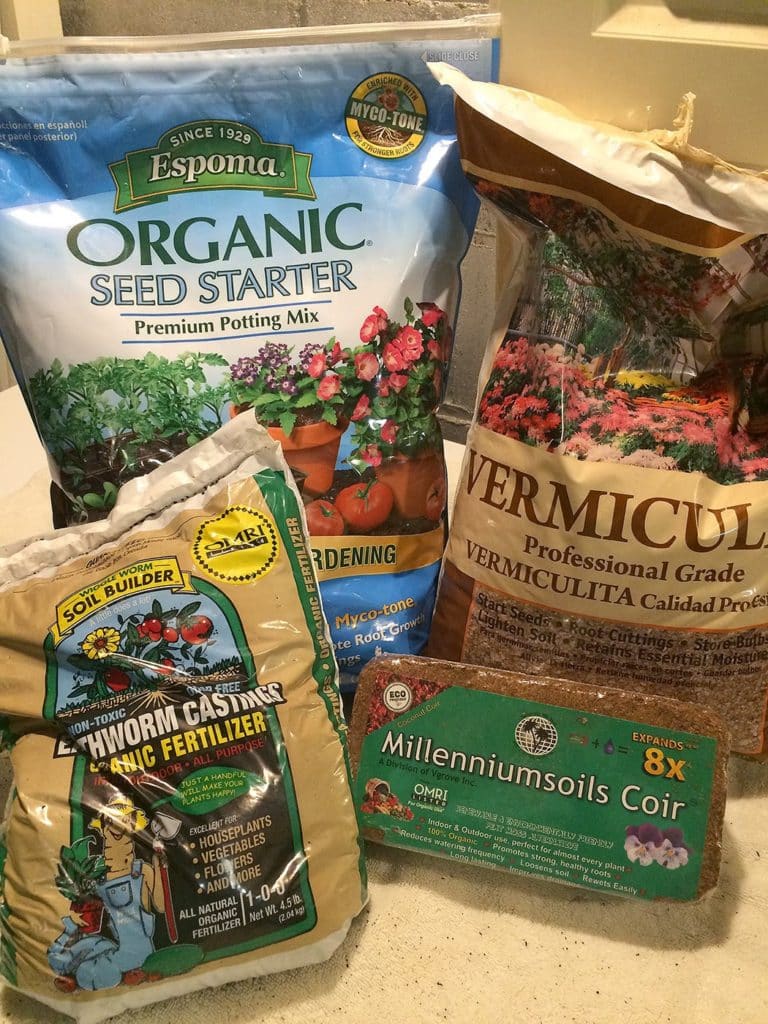 |
| A few of the ingredients I use in my homemade soil blocker mix. |
For my homemade mix, which I came up with after reading other recipes and just experimenting, I’ve been using coir bricks that I’ve reconstituted for at least 24 hours as a binder, a regular organic seed-starting mix, vermiculite, some worm castings and a bit of bone meal. These ingredients (or similar ones) seem to come up in almost every recipe I’ve seen in varying amounts.
Roughly it breaks down to these amounts, although I admit I eyeball it all and have never measured anything.
Soil Block mixture:
(Some affiliate links are used)
2 parts reconstituted coir fiber
2 parts sifted organic seed starting mix
1.5 parts vermiculite
1 part worm castings (if you can find them)
.5 parts (or less) bone meal
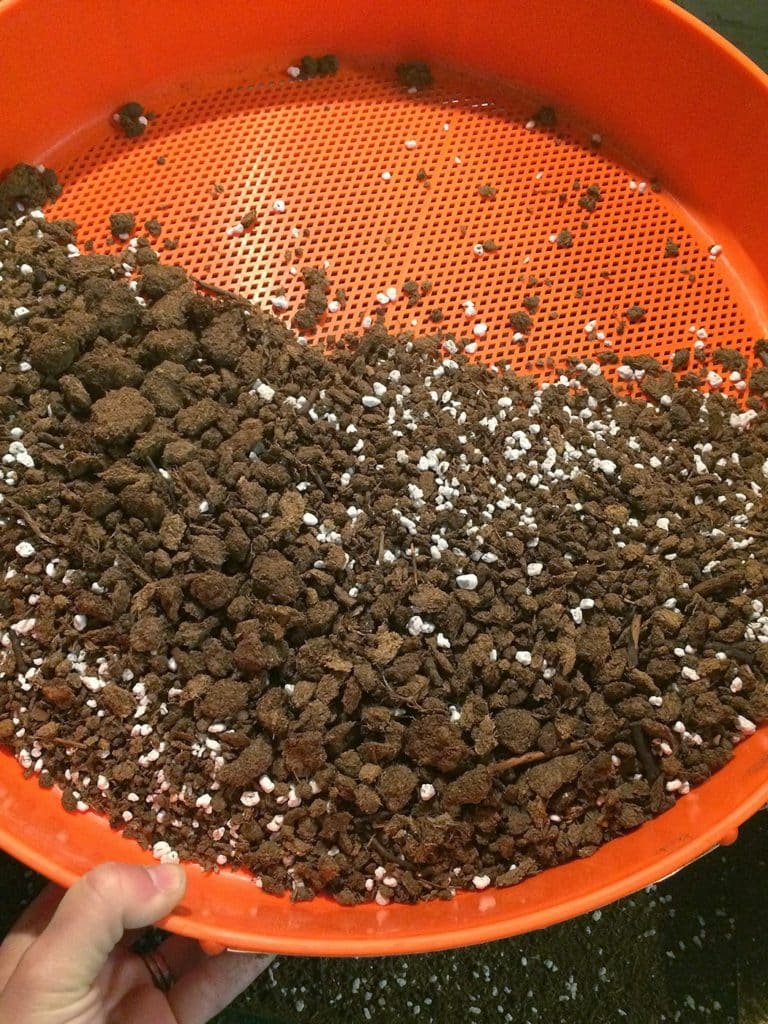 |
| There are a lot of large bits left after putting the ingredients through a sieve. I save these bits and will use them in other potting mixes. |
I use a big soil mixing tray to work it all together, mostly with my hands. (You’ll notice I’m wearing rubber gloves in the photos. That’s only because the mixture gets super messy and it’s hard to sow seeds when you can’t find them in your hand because of all the mess!)
The next step is to add a good amount of water. Even better than water is compost tea. The amount will depend on how moist your ingredients were to begin with but you’ll probably add more than you think. I mix it in with my hands, adding water until when I grab a handful, the mixture holds together a little water squeezes out. Sometimes it’s helpful to reserve a little soil mixture in case you overdue it on the water.
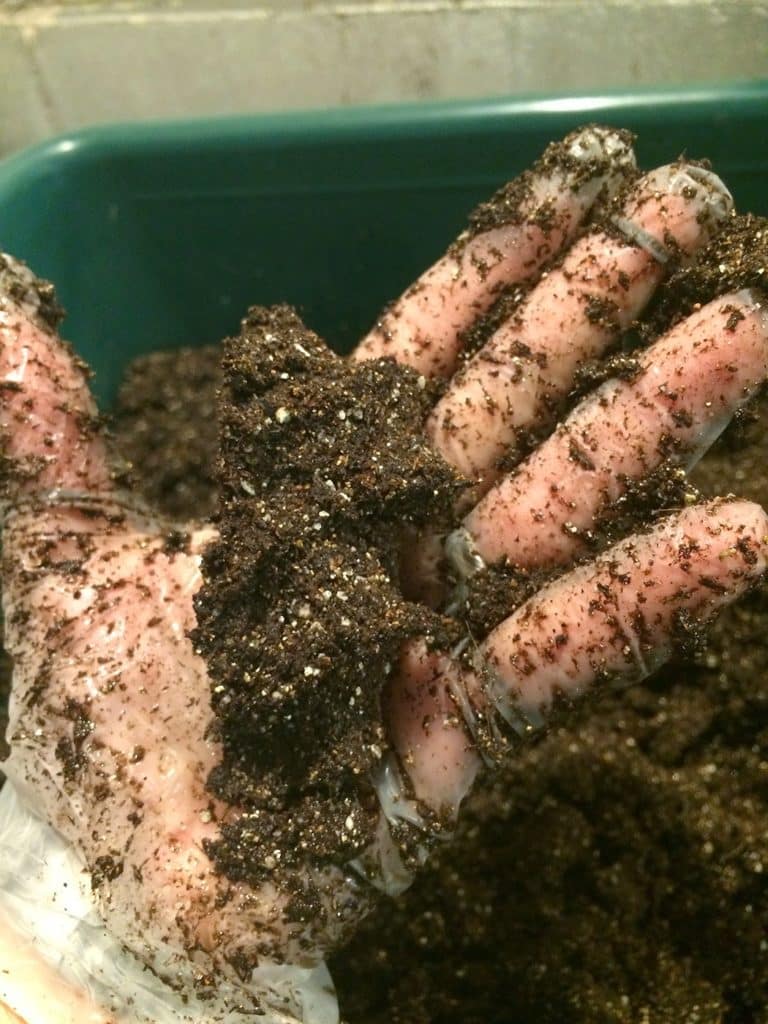 |
| You’ll know the mixture is wet enough when liquid comes out when you squeeze it and it holds together. |
Here’s how you make the blocks:
- Dip your soil blocker in water. This will help the soil blocks slide out and it’s important to do this between every set.
- Stick your blocker into a pile of prepared soil mix and rock and twist as you apply a lot of pressure. The point is to really jam the blocks full of the mix.
- Flip the blocker over and test with your finger that the blocker is really packed. Especially check the end blocks as those seem to miss out sometimes. If necessary, I pack in more mix with my hands.
- When you’re satisfied that it is packed tight, take some kind of straight edge—I use a 9-in-1 painter’s tool—to scrape the bottom of the blocker so that they have nice flat bottoms to sit on.
- Put your blocker in a tray without holes and slowly depress the plunger, rocking gently a little bit to help release the blocks from the mold.
- Repeat all steps, setting the blocks tight to one another, until the tray is full.
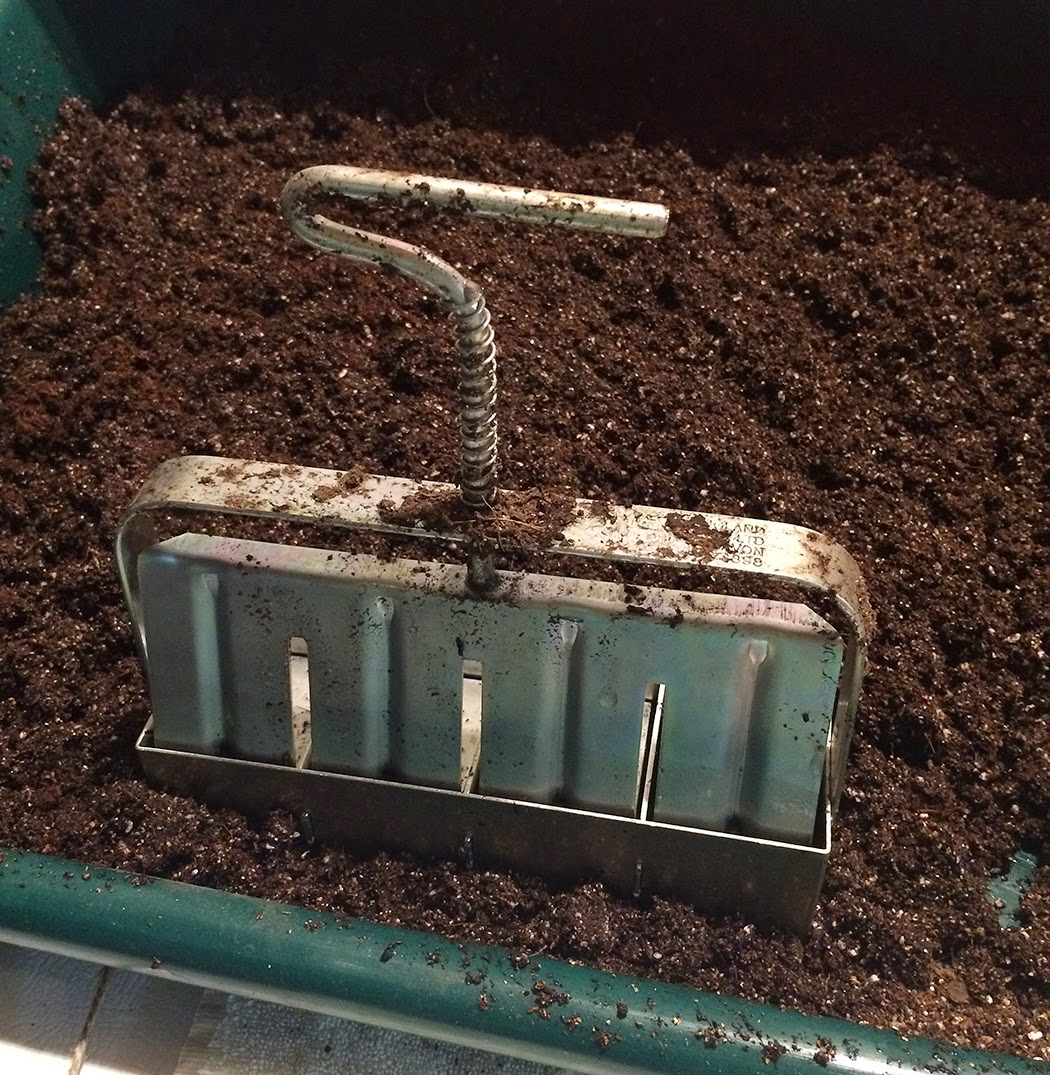 |
| Wiggle the soil blocker around in the soil to pack in as much mix as you can. |
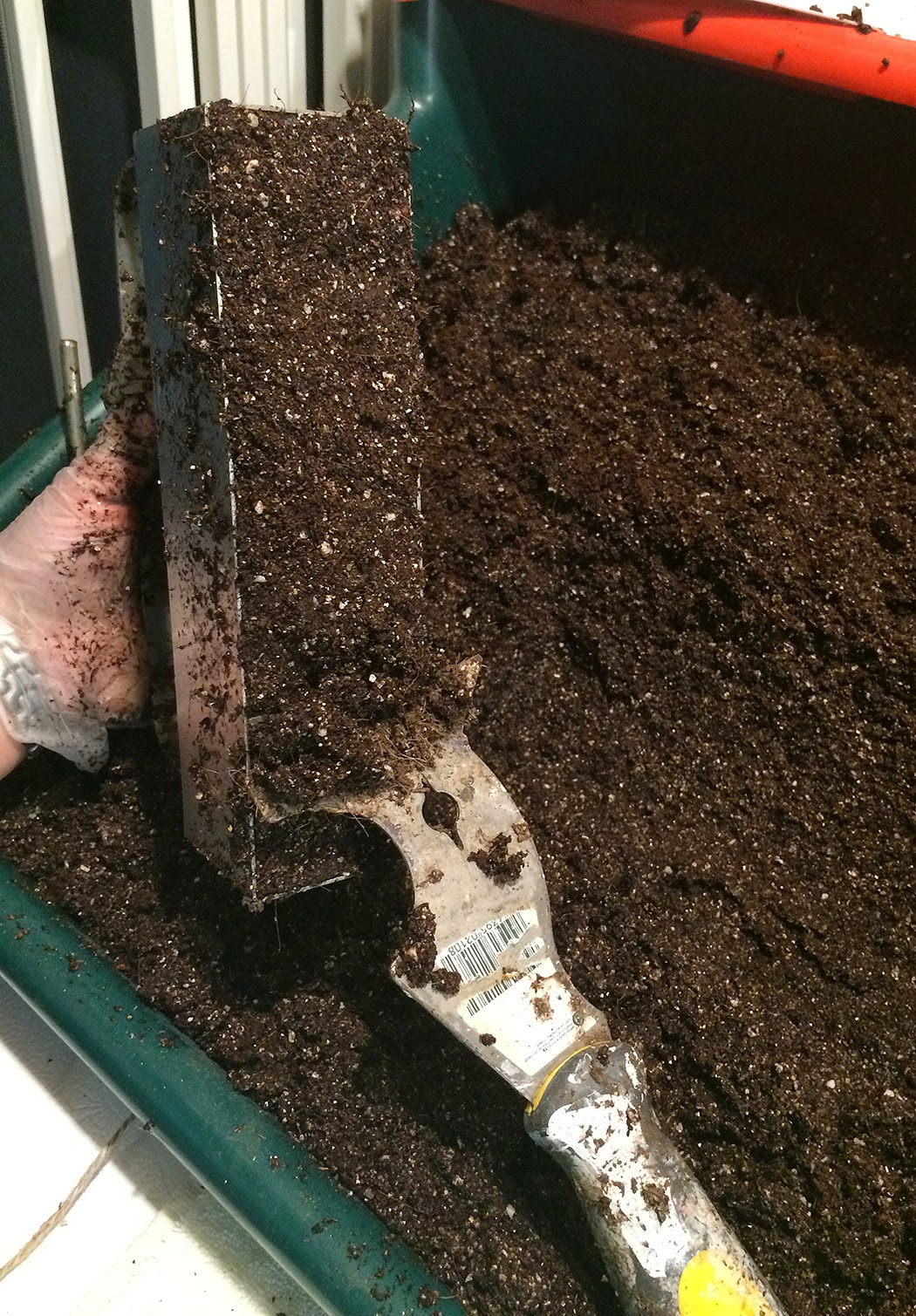 |
| When you’re satisfied that the blocker is tightly packed, use a straight edge such as a painter’s tool to scrape the excess off the bottom so the blocks sit nicely in the tray. |
Then you just plant the seeds as you normally would. If they are tiny seeds that are meant to be surface sown, I fill the depressions in the blocks with a little mix. Then I always sprinkle some vermiculite over the blocks after sowing to help keep them from developing a crust on top.
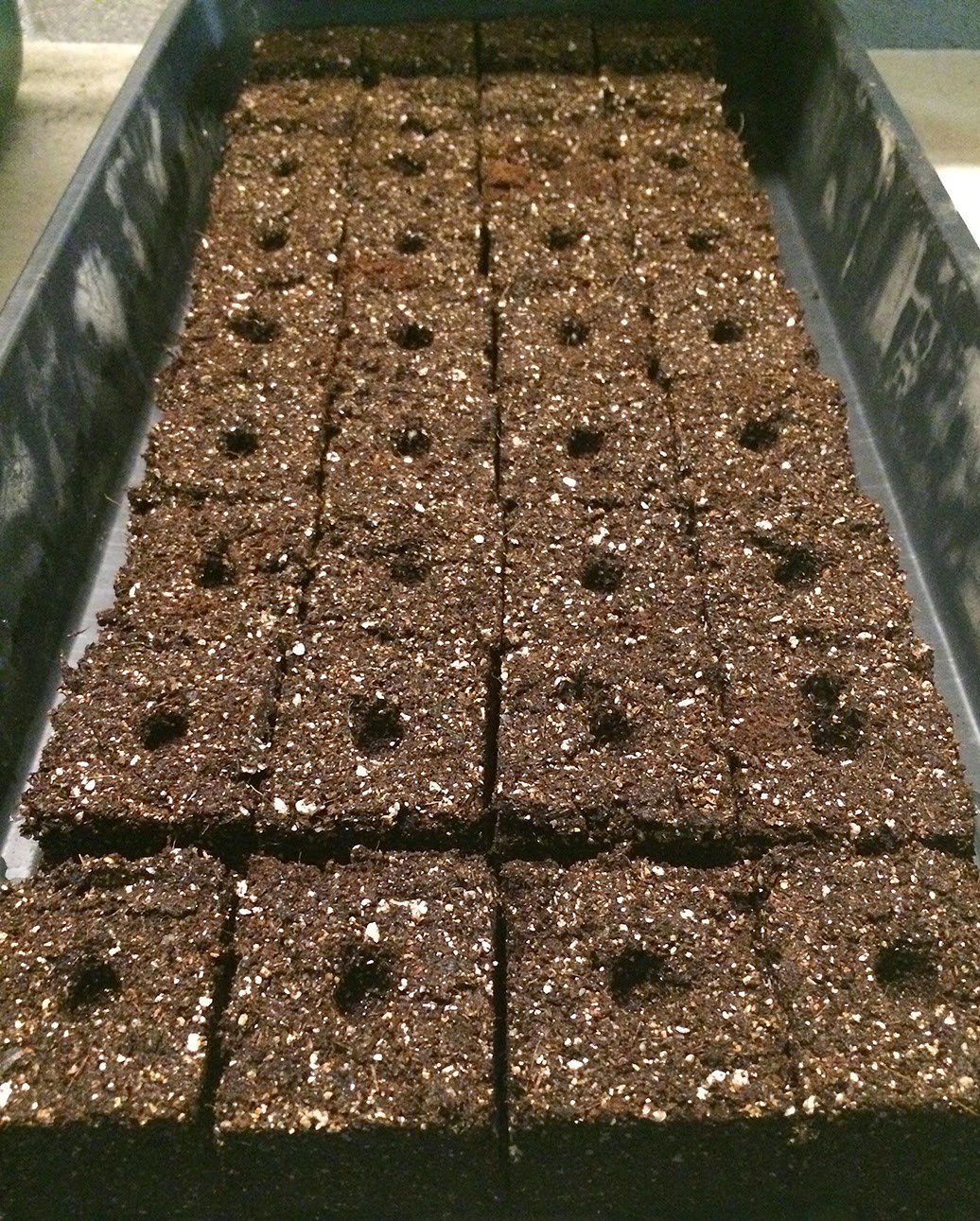 |
| When all your blocks are made, it’s time to sow seeds. |
If you put a dome over the tray while the seeds germinate, you probably won’t have to water for several days because there is enough moisture in the blocks. Once the seeds have germinated and you remove the dome, though, they can dry out pretty quickly. I just pour water in the bottom of the trays once or twice a day and keep a spray bottle handy to spritz the top if necessary.
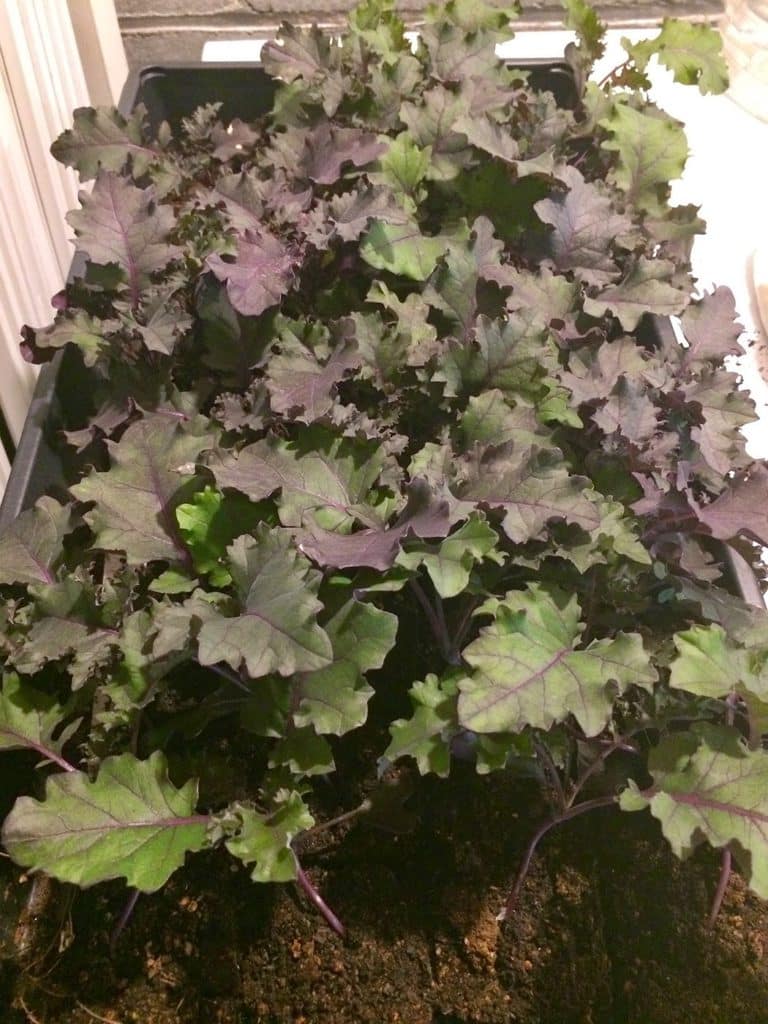 |
| This Redbor kale grew very well in soil blocks. |
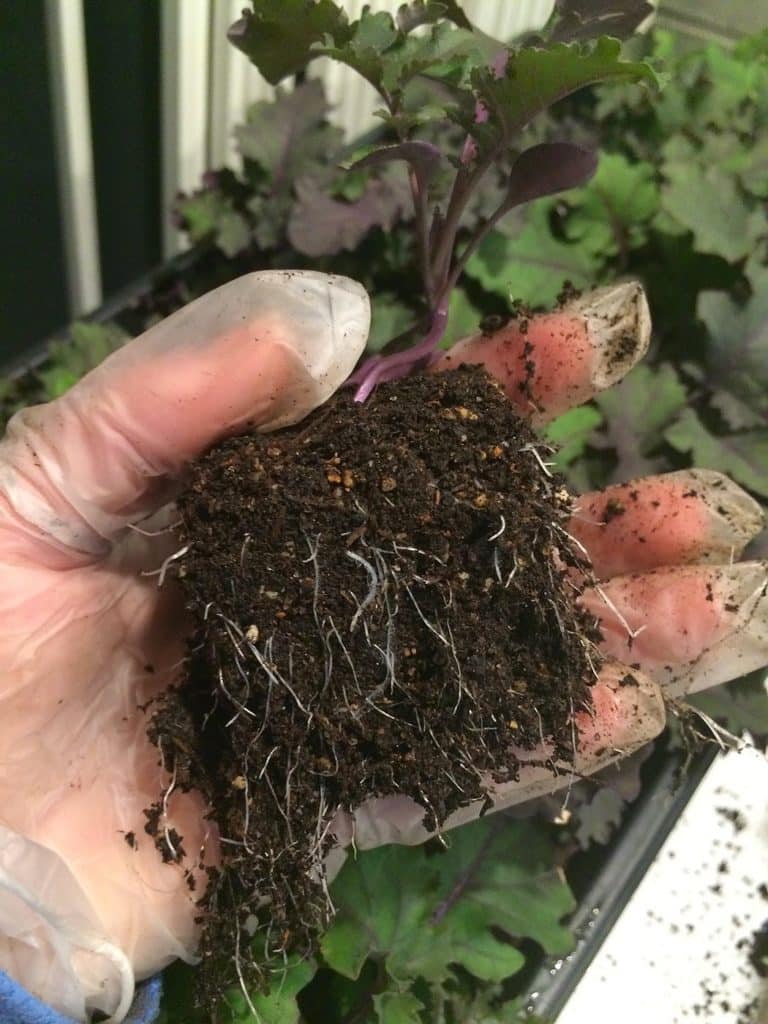 |
| Each block had a lot of roots and it was time to pot it on in larger individual pots. |
It’s time to harden them off and plant them out or pot them on when you see a lot of good root growth, which of course is easy to measure since you can examine the entire block unlike when you’re growing in seed trays.
[custom_code name=”amazon”]

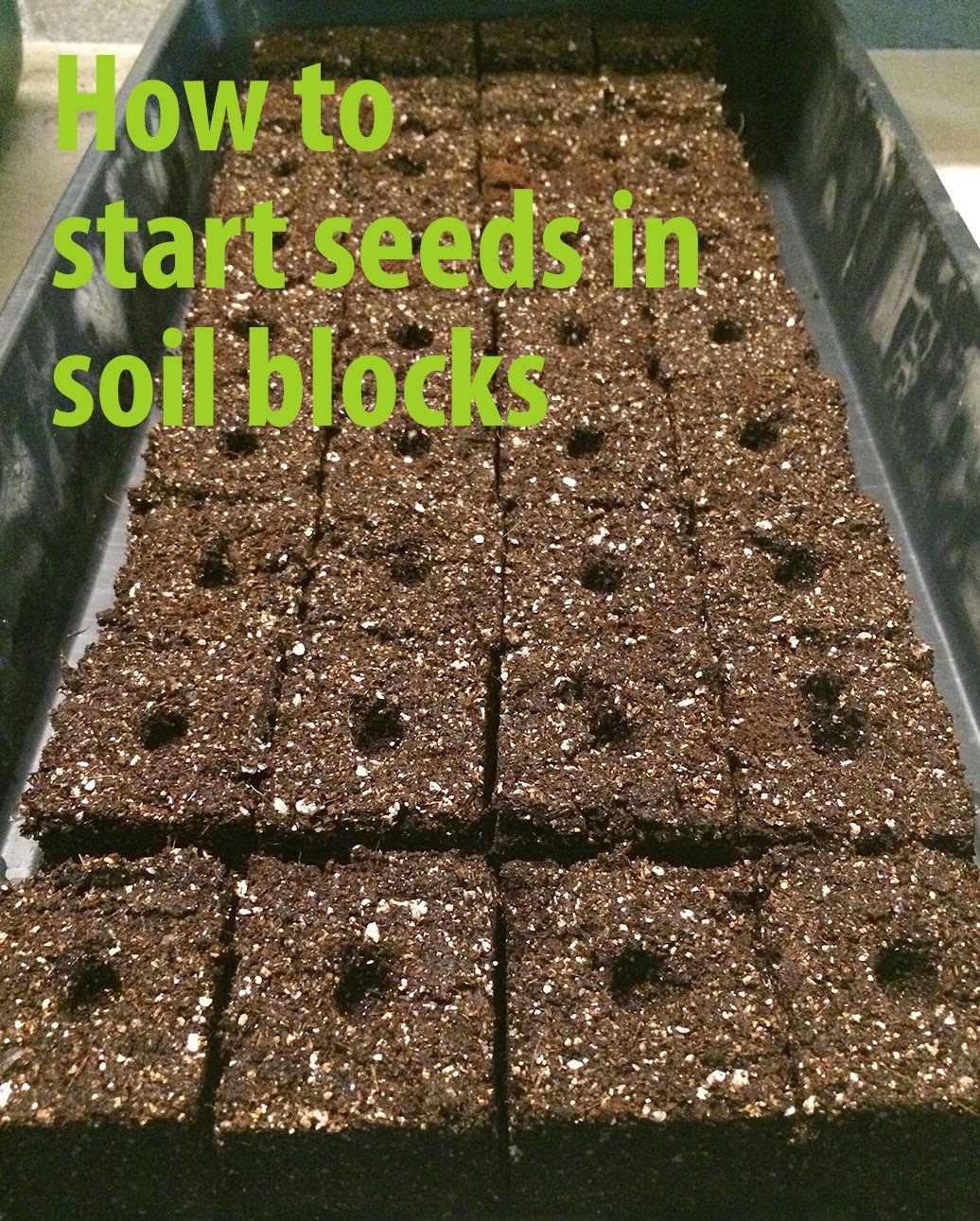
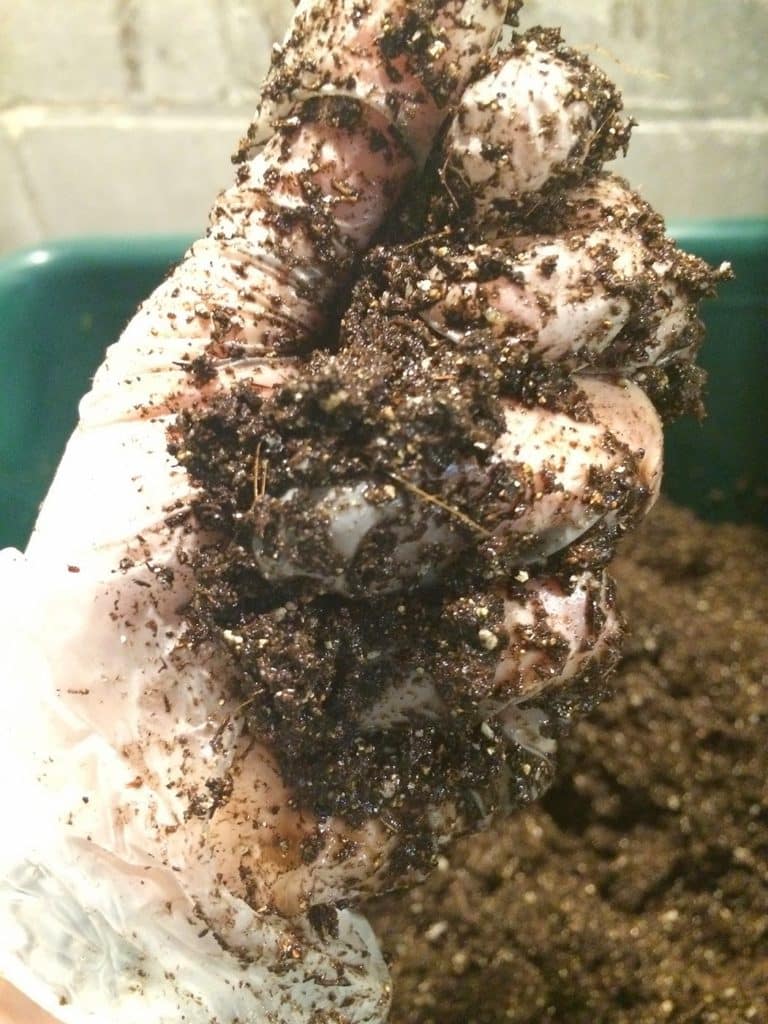
7 Responses
Erin – Do you still use this recipe or have you made modifications? Thank you!
One trick I learned from a greenhouse owner was to mix rooting hormone in the soil prior to making the blocks or transplanting. Strong roots equal healthy plant.
I got a soil blocker this year for Christmas and am loving it too. It took a little practice to get the soil right for it to work but once I perfected that I really am liking it! Plus I never have to worry about running out of those flimsy plastic packs anymore. : ) I think I may get the smaller size of soil blocker next year too.
I haven't tried a soil blocker yet but you have me convinced it is well worth a try. On my list of things to get. thanks for the post and your insights into making a good mix.